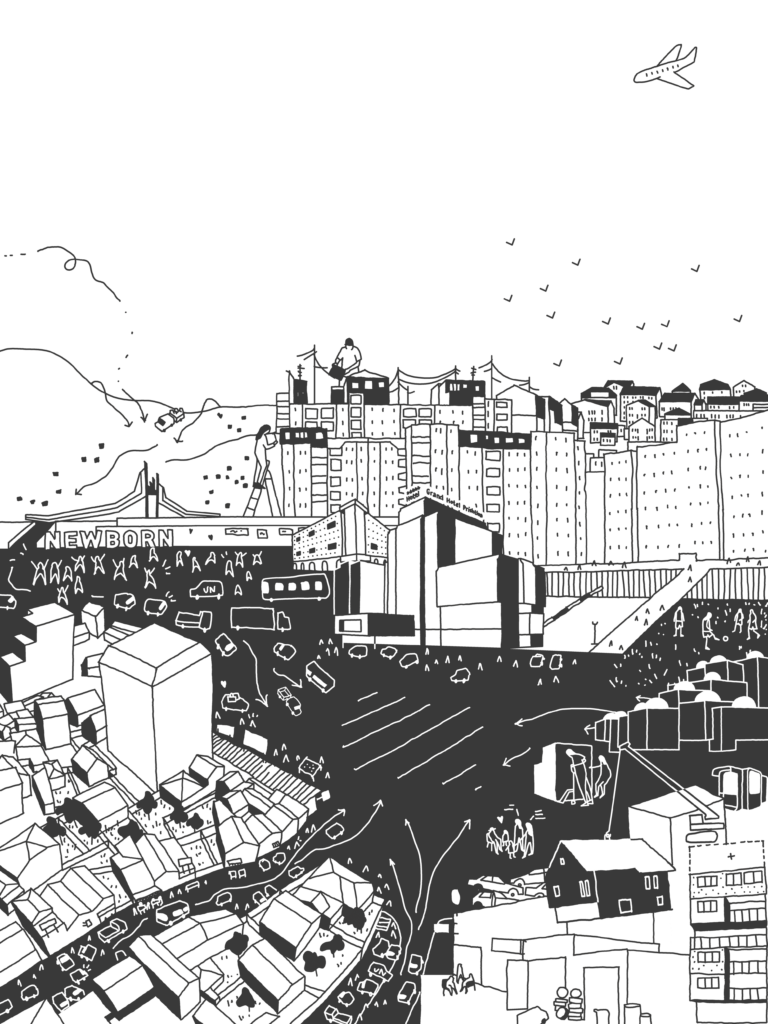Transition

After the war, there was great euphoria and a sense of departure – many people returned voluntarily to Kosovo to rebuild the liberated country in a joint effort. The transcendent locality as an individual place of longing, origin and desires seemed to become real and tangible in liberated Kosovo. New spaces of possibility for design opened up. The city was an attraction for both returnees and immigrants from rural areas. It was hoped that life in the city would improve living conditions, facilitate access to the labour market and education facilities.
In addition to the possibility of better living conditions, the city was also a place of public and shared joy – comparable to the concept of the European city according to the Leipzig Charter as a place of democracy, pluralism, rationalism and public interest, as well as public space as a place of exchange, free residence and protest.
It soon became apparent, however, that the cities could not cope with this pressure and that the housing needs could not be met by the influx of returnees and rural-urban migrants. As a result, irreversible informal construction activities have taken place to this day, due to unclear planning responsibilities, rampant corruption and a critical reconstruction programme. Housing was needed – so it was created informally without further ado.
To this day, residents of Kosovar cities suffer from the consequences of informal development: entire districts of the city are almost completely sealed and do not have any noticeable open space structures. A defective building substance and static problems of informal extensions represent a real risk for the residents of the buildings. In addition, in many places, urban planning qualities must be created in the sense of compact and climate-friendly cities and the process of urban sprawl, which is destroying important landscape areas, must be halted.

